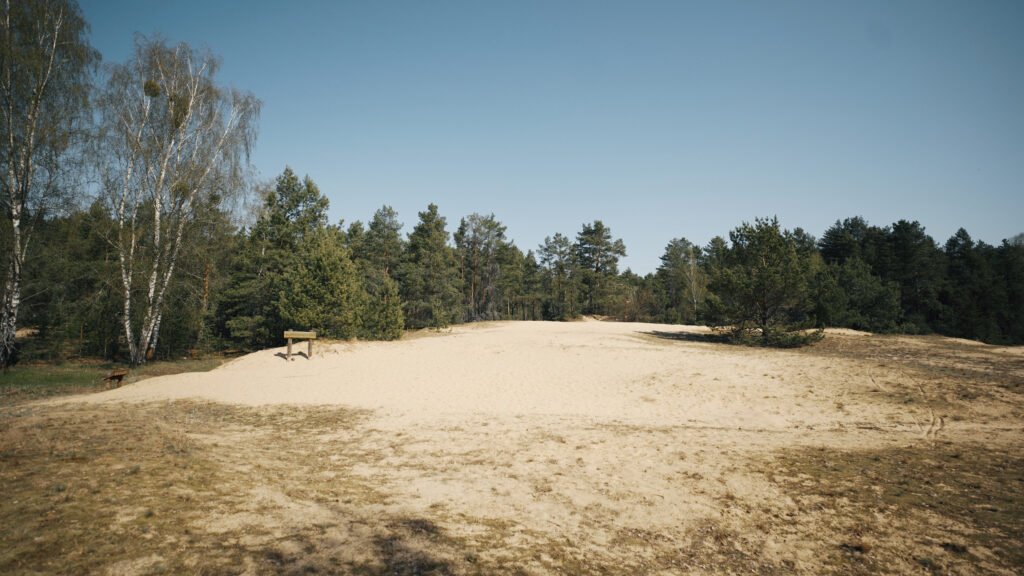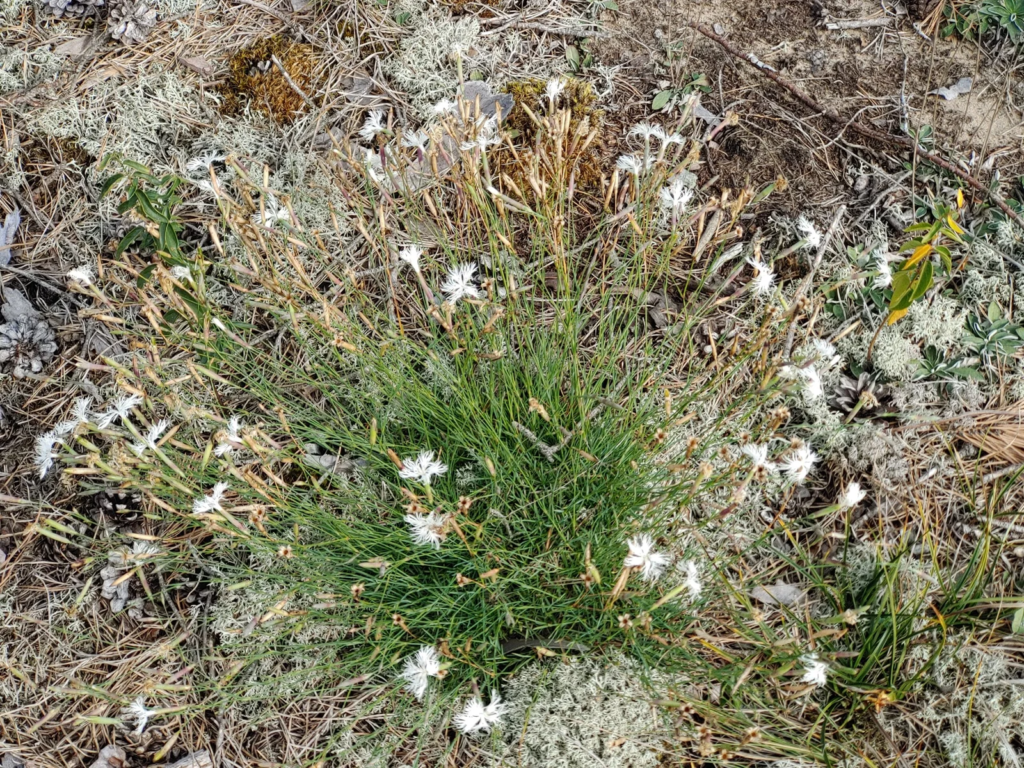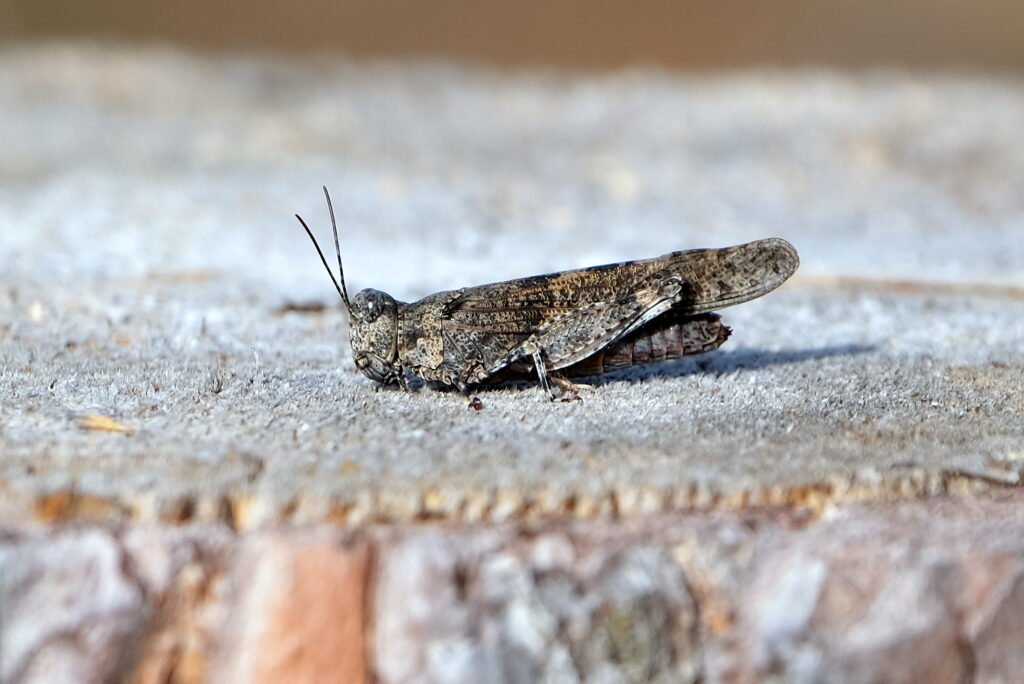
Dunes in Dzūkija. Photo: Kostas Kajėnas
“It is gratifying to see that continental dunes have already been opened in Dzūkija National Park. Controlled burning of the bedrock will allow species that naturally grew in those fire sites to settle there,” says Assoc. Prof. Dr. Eduardas Budrys, Senior Researcher at the Nature Research Centre.
According to him, in the past, fires regularly occurred in natural pine forests in Dzūkija. Research in the Čepkeliai Reserve showed that large fires occurred on average three times per century in the past. This resulted in the natural pine forest looking like a mosaic – open sandbanks formed in the burned areas and specific habitats were created. They created the necessary conditions for many plant and animal species, which could only live in such fire sites.
“Unfortunately, those species that used to live in open areas of pine forests and fire sites have almost disappeared. In order to help them recover, we are now trying to restore the natural mosaic that once existed, but later disappeared due to farming and fire protection, using human-made means,” notes E. Budrys.
Contributes to the conservation of endangered species
At the beginning of 2023, 12.8 ha of naturally valuable continental dunes were opened in Dzūkija National Park. The pre-planned nature management measure allowed us to enjoy the first results at the initial stage – gradually increasing biodiversity, regenerating heat-loving open sand plant and insect species.
For example, in the opened open habitats, it was possible to find sand brush and common thyme. Also, sand carnation, which is included in the list of protected species in Lithuania, began to establish in them wind-blown sedge.

Eastern pasqueflower. Photo: Žymantas Morkvėnas.

Sand pink. Photo: Giedrius Švitra
In the open dunes of Dzūkija, the common sandpiper, which is listed in the Lithuanian Red Book, was also discovered. “This is one of the indicator insect species, the appearance of which indicates that the condition of the open ecosystem there is improving. Viable populations of common sandpipers can form in such open habitats (dunes),” said E. Budrys.
In March of this year, controlled burning is planned to be implemented in the areas provided for in the nature management plan of the Dzūkija National Park – in the open continental dunes. This nature management measure, which has been successfully applied abroad, will significantly contribute to the conservation of endangered and protected insect, bird and plant species. Many of them are listed in the annexes of the EU Birds and Habitats Directives and the Lithuanian Red Book.

Oedipoda caerulescens. Photo: Nerijus Žitkevičius
Learning from experience in foreign countries
“Fire has been an integral part of nature probably since ecosystems and forests appeared on land, when there was enough oxygen in our planet’s atmosphere for combustion. Many current forest systems have adapted to fire,” notes E. Budrys.
According to him, we do not think about why pine is so rich in terpenes, which makes even green pines catch fire easily, or why eucalyptus, which smells so delicious, contains substances that we call essential oils. “These are substances that help dry eucalyptus branches to ignite, because eucalyptus forests regenerate in Australia through fires. In dry subtropical conditions, organic matter slowly rots, so the nutrients accumulated by plants in dry leaves and branches remain in the litter, and the roots of plants begin to lack them. When the litter burns, the nutrients return back to the soil and become accessible to the roots of those plants.”
The fact that species of plants, insects and birds have evolved under the influence of fire for millennia, and that burning sites have become necessary for the survival of some species, has been observed abroad for quite some time. Controlled burning, as an effective means of habitat restoration, is successfully applied by Latvia, Sweden, and Finland. For example, a joint Swedish and Finnish project is currently underway, the main goal of which is to restore forest habitats in poor condition using controlled burning. Controlled burning is also used as a means of nature conservation and fire prevention in the United States and Australia.
Views and opinions expressed are however those of the author(s) only and do not necessarily reflect those of the European Union or CINEA. Neither the European Union nor the granting authority can be held responsible for them.
